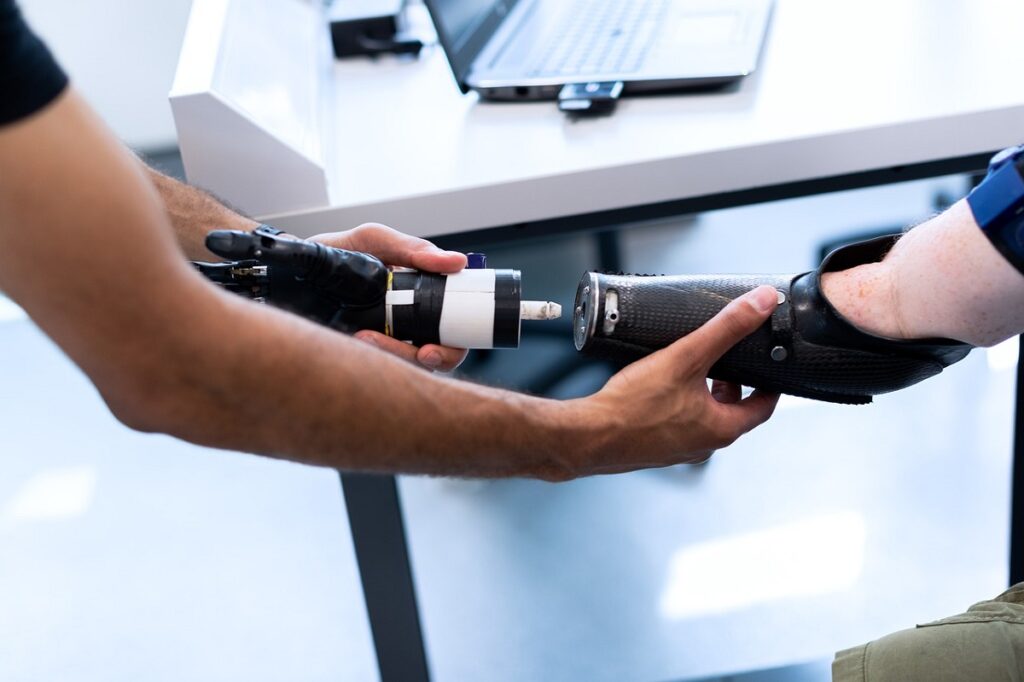Numerous different types of disabilities qualify a person to use disabled parking. Many drivers have a disability that requires they use a prosthetic device. Prosthetic device technology has improved impressively over the years, and today there is an array of incredible, state-of-the-art prosthetic devices available.
Prosthetic devices are hugely important to their owners. These invaluable devices enable people with various types of disabilities to move freely through the world and to live independent lives. Many disabled drivers depend on their prosthetic device to drive their vehicle. Their vehicle and prosthetic device are both crucial lifelines that help them to do what they want to do and go where they want to go.
For prosthetic device users, a prosthetic limb is a sacred piece of equipment. It is a de facto extension of their bodies and needs to be cared for and kept in tip-top condition. To this end, below we’ll discuss some prosthetic device storage advice for disabled drivers.

Why Do People Get A Prosthetic Device?
People get a prosthetic device when an arm, leg, foot, or hand has been lost or amputated. Prosthetic devices are also used by people who were born without an arm, leg, foot, or hand.
A prosthetic device takes the place of a missing limb and enables people to function and live freely without their limb.
What Types Of Prosthetic Devices Are Available?
The most common types of prosthetic device are:
- Prosthetic hand
- Prosthetic arm and hand
- Prosthetic lower leg and foot
- Prosthetic full leg with knee
How Do Prosthetic Devices Work?
There are several different types of prosthetic devices available that work in different ways. Some prosthetic hands are controlled by the body’s own movements using a harness that extends across the back and under the opposite arm. Other devices use a battery to run a motor in the prosthetic hand. Some devices use hydraulic mechanisms or computerized parts. Some are controlled by microprocessors and use feedback from sensors to adjust joint movement.
What Are The Main Components Of A Prosthetic Device?
The main components of a prosthetic device are:
- The socket that fits over the stump of the amputated limb
- The suspension that holds the prosthetic device in place
- The shaft and foot, hand, or hook
- A cosmetic covering
- The operating system: harness, hydraulic mechanism, computerized parts, motor, or microprocessor.
How Should You Store A Prosthetic Device?
You should store your prosthetic device somewhere safe where it will not be knocked over or damaged. You can lie it down in a safe place or prop it against a wall. Do not store your prosthetic device in a hot place such as beside a radiator or in direct sunlight, or in a place where it could get wet.
How Do You Take Care Of A Prosthetic Device?
Wash your prosthetic device daily with warm water and soap and then dry it thoroughly. Do not bath or swim while wearing your prosthetic device. Do not attempt to adjust or fix your prosthetic device yourself. If an issue arises, always contact your prosthetist.

How Many Hours A Day Can You Wear A Prosthetic Leg?
How long you can wear a prosthetic leg for depends on how new it is. When you first get the device, you will need to follow a specified wearing schedule designed by your prosthetist to get you used to wearing it. Once you have completed your training, you can wear the device for as long as you want. However, you should always remove the prosthetic device before bed. Do not sleep, bathe, or swim with your prosthetic device on.
Are Prosthetic Device Users Entitled To Use Disabled Parking?
Prosthetic device users are entitled to hold a disabled parking permit in every US state.
What Types Of Disabled Parking Permits Are Available For Prosthetic Device Users?
Prosthetic device users are entitled to hold a permanent disabled placard or plate, or a Disabled Veterans plate if their disability is military service-related, in all US states.
How Do You Apply For A Disabled Parking Permit?
The easiest way to apply for a disabled parking permit is to arrange a telemedicine consultation with a licensed medical professional in your state. The medical professional will verify your disability and fill in the relevant sections of a disabled parking permit application form. You can then fill in the remainder of the form and submit it to your local disabled parking authorities.
Featured image by RAEng_Publications on Pixabay
